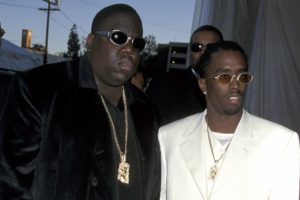
22 Mar A Brief History of Hip Hop Culture
Culture

Hip Hop’s roots are credited to the African American community, as well as Jamaican-American and Latino-American communities. Keith Cowboy of the Grandmaster Flash and the Furious Five is credited with coining the actual term “hip-hop” and DJ Afrika Bambaataa is credited as the first to describe hip-hop as a subculture. In 1979 The Sugarhill Gang produced a song called ‘Rapper’s Delight’, known as the first hip hop song to break into mainstream music.
The term ‘hip-hop’ is used to refer to both a musical style and subcultural movement. The youth subculture of hip-hop originated in poor neighbourhoods of the Bronx, New York in the early 1970s when the black youth began Djing and rapping with pre-recorded electronic and instrumental beats for entertainment and independence. DJ Afrika Bambaataa outlined the 5 pillars of hip-hop – MCing, DJing, breaking, graffiti writing, and knowledge. KRS-One said “Hip is the knowledge, hop is the movement. Hip hop is intelligent movement”.
“Hip-hop is not only a genre of music, but also a complex system of ideas, values and concepts that reflect newly emerging and ever-changing creative correlative expressive mechanisms including but not limited to song, poetry, film and fashion”
The philosophy of hip hop includes being honest and imaginative, and talking about what is important to you. Hip hop values unity, love, respect, and responsibility received through connections with the subculture, as well as conveying a voice or message about the feelings and the never-ending struggles and slow-evolving successes of black urban youth in America.
Hip-hop subculture has evolved into modern-day urban culture defined by style, personality and association with hip-hop music. This promotes diversity with a union of ethnicities relating through music and inspires teens to feel empowered to rebel against society’s expectations.
Music

DJ Kool Herc, an immigrant from Jamaica, introduced the musical technique of isolating percussion, now an identifying characteristic of rap and hip hop. At block parties Djs would play breaks of popular songs using two turntables to extend the breaks and rapping developed as a vocal style in which the artist speaks along with instrumental or synthesized beats. The Golden Age of Hip-Hop stands as an innovative period between the mid 1980s and early 1990s. In the 1990s regional styles of hip-hop music emerged on the national scene such as Southern Rap and Atlanta Hip Hop, and it was also assimilate into other genres, such as Neo Soul.It was a best-selling music genre in the mid 1990s and the top-selling by 1999. By the mid 2000s alternative hip-hop secured a place within the mainstream.
Fashion

N.W.A. took the scene in the 1980s with casual staples such as crewnecks, jeans, and tees coupled with large jewelry and swagger, taking it from basic to bold. In 1995, rappers such as Biggie and Puff Daddy began developing a taste for designer clothes and accessories as mainstream hip-hop adopted a more glamorous image. During the mid 90s, gangster fashion influenced by the prohibition gangsters of the roaring 20s manifested with Snoop Dogg and Tupac in double-breasted suits, alligator shoes, silk shirts and fedoras. Today’s hip-hop fashion has evolved into ‘urban street wear’ that heavily influences the buying decisions of 16-34 year olds. This wide appeal demonstrates both the trickle-down and trickle-up effect. Modern day tastemakers like Kanye West have ‘adopted a more sophisticated, tailored look that contrasts hip-hop’s urban roots but signify the entrepreneurial success of some of hip-hop’s iconic celebrities’. This has left hip-hop fashion in a blend of street wear and designer pieces.
Research from:
https://www.bartleby.com/essay/Subculture-of-Hip-Hop-a-Sociological-Analysis-F3CVVN23VJ
https://kingscliffdesignhistory.wordpress.com/2013/03/11/hip-hop-subculture/
https://study.com/academy/lesson/what-is-hip-hop-subculture.html


